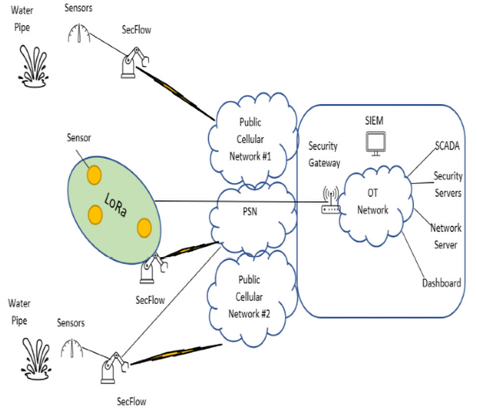This is an industry-based implementation of a water utility IoT network. As you navigate the flow of the network, pay close attention to the protocols that are being used within certain areas, how different environments are handled with certain networks, and how the connections are done from one end to another:

Figure 4.6 – Water utility IoT network
Here, we can see that between the sensors, the LoRaWAN network is used as the sensors are more geared toward use in long-distance scenarios. Furthermore, we can see that they have decided to use cellular networks in the form of LTE to communicate between the LoRa network and the cloud. They have done this between the three areas of sensors, although the other areas that contain the sensors use serial communication.
When planning such networks, we always need to continually ask ourselves whether the choice of protocol we have is the best choice for the given scenario. Are we optimizing the best we can and accounting for the possible edge cases based on risks that could happen? The more production-critical your workload is, the more imperative that this is considered. This will certainly be something that you will continuously have to put on the forefront of your mind as an IoT developer to prevent adverse scenarios from happening and to best support the objectives of your IoT deployment.
Practice forming more networks
Now that we have a deeper understanding of the components of various networks, let’s continue to investigate forming more networks. Think how each of the following scenarios would be formed. For ease of planning for such scenarios, we recommend using diagramming software such as Draw.io to draw your sketches:
A network based on an urban area where sensors are based on construction appliances located a kilometer from each other and they need to communicate with each other alongside the cloud
A smart data center building that requires RFID for entry and has sensors around it to measure temperature, humidity, and air pressure
A water treatment plant based in an urban area needs to access cellular communication based on the base stations around it to report back to the control hub
With this, you will have obtained a much deeper understanding of working with different protocols in establishing your IoT networks. Now, we can put all this into practice and work on a practical scenario where we will use multiple communication protocols with ESP32.

